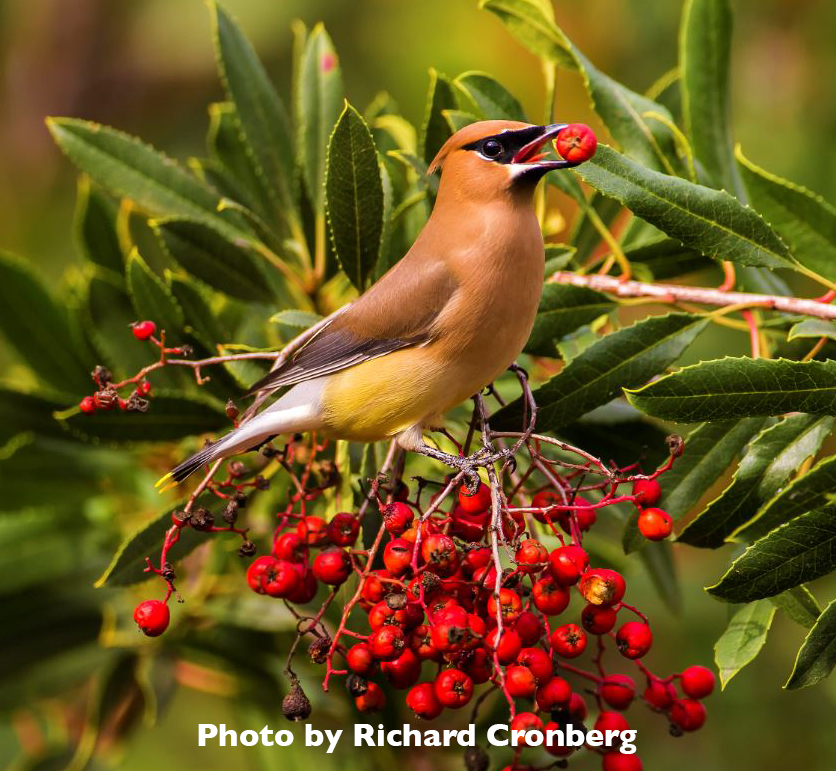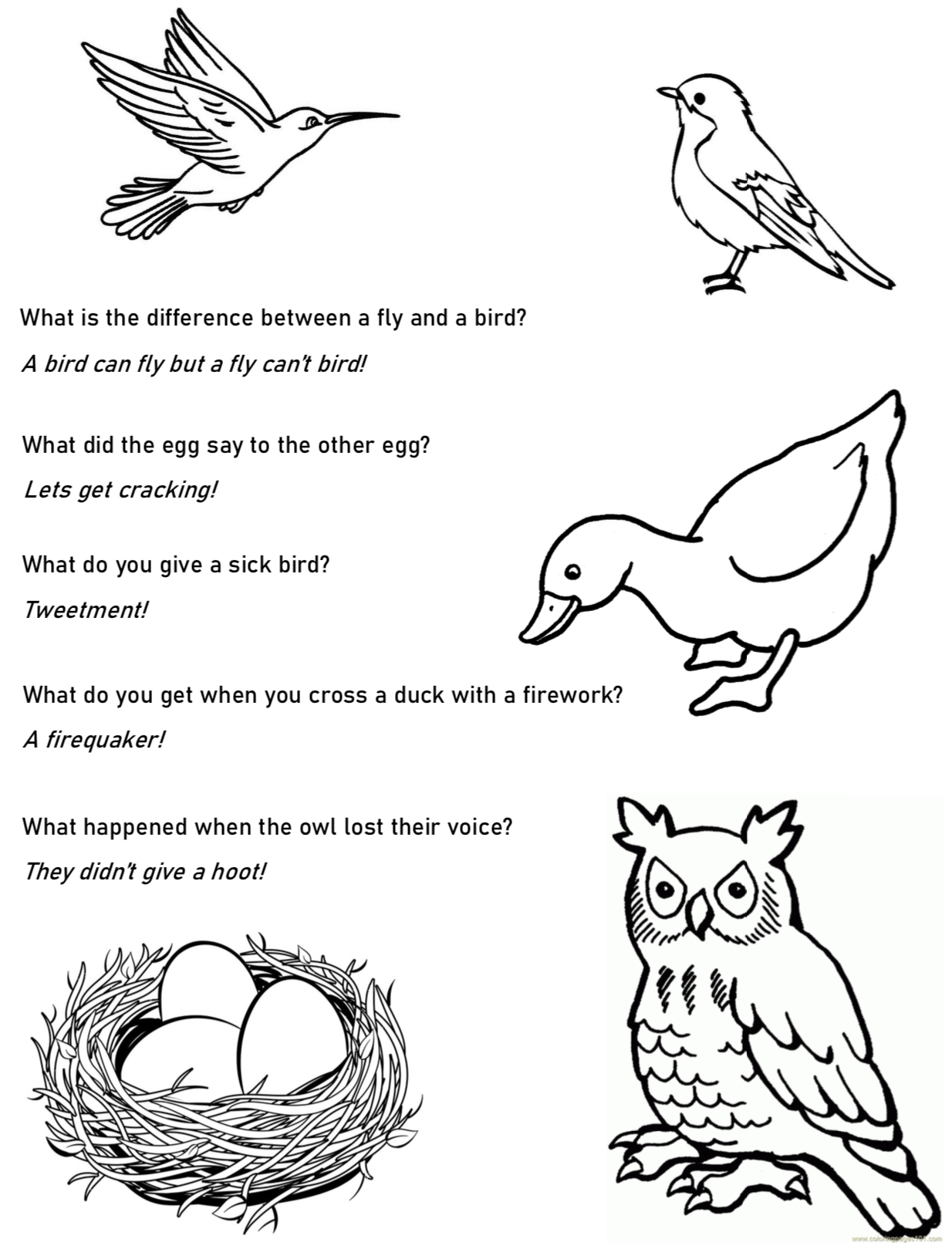⬅ Click here to return to the Winter Camp portal
| Day | Schedule |
|---|---|
| Wednesday 12/30/2020 |
Migration Meet our pool birds Make a raptor decal for your window Click on follow-up DIY activities below: Print Wednesday's activities |
Bird Fruit Salad Recipe
SNACK BREAK!
 Many birds will feast on fruits and berries to fuel up during their migration. Other birds that don’t migrate will also eat fruits and berries to have enough energy to stay active throughout the day and stay warm throughout the cold winter night. Different plants grow at different times of year, and this recipe includes some of winter’s tastiest seasonal fruits.
Many birds will feast on fruits and berries to fuel up during their migration. Other birds that don’t migrate will also eat fruits and berries to have enough energy to stay active throughout the day and stay warm throughout the cold winter night. Different plants grow at different times of year, and this recipe includes some of winter’s tastiest seasonal fruits.
Try this Bird Fruit Salad recipe to find out just how tasty some birds’ meals are!

Substitute any of these seasonal winter fruits for your personal favorite fruit salad ingredients. This recipe makes enough salad for 2-3 people to share.
Ingredients:
- ½ pomegranate
- 1 pear
- 1 apple
- 2 fuyu persimmons
- 2 clementines
For the dressing:
- 1 Tablespoon honey
- 2 Tablespoons freshly squeezed lemon juice
- ½ teaspoon lemon zest
- A few chopped mint leaves
Steps:
- Wash your hands!
- Wash all of the fruit.
- With the help of an adult, prepare all of the fruit. Remove the seeds from the pomegranate. Cut the pear and apple into slices or bite size pieces. Peel the persimmons and cut into bite size pieces. Peel the clementines and separate the sections.
- Add all of the cut fruit into a bowl.
- Mix the honey, lemon juice, and lemon zest in a small mason jar. Make sure the lid is on tightly, and then shake to combine.
- Pour the dressing over the fruit salad and gently toss to combine.
- Add a few chopped mint leaves on top, and it’s done!
Enjoy your Bird Fruit Salad!
Scroll down for more activities
⬇

Practice Your Observation Skills
With this Birding Activity!

When we go outside and practice noticing what's around us, we start to be more aware of all the incredible things happening in nature.
Birding is a way to piece together a story of what kinds of animals live nearby, and what their daily lives are like.
Identifying birds and recognizing their songs adds another layer to our understanding of and connection with a place.

Practice your observation and nature awareness skills by trying these tips and tricks to birding!
You can see, hear, or find evidence of birds almost anywhere you go outside, whether you're in a backyard, or a park, or on a neighborhood walk, or just looking out a window!

Try these awareness activities each time you go outside, and you will start to recognize the sights and sounds of birds in your neighborhood. Then you can try to identify them and learn more about them.
What do you hear? Sometimes birds are easier to hear than to see, so let's practice noticing their sounds. Go outside, close your eyes, and listen for bird songs. With your eyes still closed, point to where you hear a bird singing, calling, rustling in leaves, squawking, chirping, etc. (birds make lots of sounds!). Then open your eyes and look for what made that sound!
What did they leave behind? Look for evidence of birds, such as droppings (which look kind of like white paint splatter), feathers, nests, cracked seeds, or tracks.
What was it doing? When you see a bird, pay attention to its behavior. Was it sitting still? Was it walking, hopping, or flying? Was it foraging for food? What was it eating? If it flies away, take a moment to record your notes by writing or drawing in your nature journal, or tell someone with you what you observed.
What did it look like? When you see a bird, pay attention to what it looked like. Was it big in size, or small? What colors was it? Did it have any patterns like dots or stripes? Was its beak long and pointy or short and triangular? If it flies away, take a moment to record your notes by writing or drawing in your nature journal, or tell someone with you what you observed.
Birders love to challenge themselves to find as many different birds as they can!

Now that you've warmed up your senses, you can also try using these helpful tools to identify birds!
Here is what you will need for this activity:
✅ Your nature journal and something to write with,
✅ Binoculars,
✅ Bird Identification Guide,
✅ A partner.
Here are some tips and tricks for identifying birds:

Practice using binoculars. Wear binoculars around your neck and practice holding them and focusing them. Focus on a close street sign so that you can read it clearly, then focus on a far away street sign. To focus on an object, stare at the object while slowly lifting the binoculars to your eyes, so that your head stays still. Then turn the focusing knob until the object isn't blurry.

Pay attention to the details. Use your binoculars to get a detailed look at the colors and patterns on the birds' feathers, the size of their body, the shape of their beak, and the length of their tail.
Describe your observations. While you're looking through binoculars, tell your partner what you notice about the bird. This helps you remember your observations and also gives your partner a chance to look through the bird guide to find a bird that matches.
Look for common birds. There are
 about 10,000 different species of birds! Let's start with getting to know just the ones that live in your neighborhood. Use a local bird identification guide to find out what birds live nearby.
about 10,000 different species of birds! Let's start with getting to know just the ones that live in your neighborhood. Use a local bird identification guide to find out what birds live nearby.Take notes. Use your nature journal to make a list of birds in the field guide that match the bird you see. Then you can look up information on those birds when you get home to narrow down the options. For example, if you saw a black bird through your binoculars and it looks like it could either be an American Crow, Common Raven, or Brewer's Blackbird, write that in your notes and then look up the differences between them.

Click here to check out the Cornell Lab of Ornithology's tips on recognizing birds based on their songs and calls!
They also have a great app for identifying birds, which you can try using here!
Have fun and let us know what birds you find!
Did you know...?
 Each year at least a billion birds migrate along the Pacific Flyway between the arctic and the tropics. Migratory birds travel some or all of this 4,000 mile-long route to follow food sources, return to breeding grounds, and escape cold winters.
Each year at least a billion birds migrate along the Pacific Flyway between the arctic and the tropics. Migratory birds travel some or all of this 4,000 mile-long route to follow food sources, return to breeding grounds, and escape cold winters.
There are many key rest stops that migratory birds stop in, sometimes in the millions, to eat and regain strength before continuing on their long journey. The San Francisco Bay happens to be one of those important rest stops!
You can find many resident and migratory birds in the wetlands, beaches, and open space around the San Francisco Bay. Keep an eye out for the California Brown Pelican, which was once an endangered species!

In the 1970's, the California Brown Pelican almost became extinct. A pesticide called DDT was used on farms to kill insects, but as it washed down sewers and rivers it was carried into the ocean and contaminated fish. When pelicans and other animals ate those fish, the pesticide built up in their bodies.
DDT changed birds' calcium metabolism and made their eggshells too thin, so the eggs would crack open when the parent incubated them. As a result, California Brown Pelicans, Bald Eagles, Peregrine Falcons, and Osprey populations crashed.
When people realized this was happening, they fought to protect wildlife by banning the use of DDT. In 1972, DDT was banned in the United States, and eventually the California Brown Pelican population increased. In 2009, California Brown Pelicans were removed from the endangered species list! Hooray!

Enjoy this fishy snack time with
Baja, our Wildlife Ambassador Brown Pelican, and
Marshall, our Wildlife Ambassador American White Pelican!
Video clip is 3 minutes long.

Bird Break!
Have you ever seen a bird wiggle its whole body and fluff up its feathers to get warm?
Let's take a break to be like a bird!
Go outside, and wiggle your whole body!
Wiggle your fingers, wiggle your toes, wiggle your arms, wiggle your legs, wiggle your torso, and fluff up your feathers!
Scroll down for more activities
⬇
Animal Jokes and Puzzles

Bird Riddles in Rhyme
What word is each of these riddles about?
For camouflage or warmth at night
To keep out rain, and help with flight...
Curved or straight, to call or tweet;
Shape depends on what they eat...
With talons sharp, hunts night or day:
This short word means “bird of prey"...
Heart beats: hundreds every hour;
This bird visits every flower...
Not inclined to upward motion,
His “flight” happens in the ocean...
Shelter ‘til hatched and grown;
Made with skill by beak alone...
Questions and Answers
Find answers to your questions about Winter Camp below, or send us an email
-
How does my camper join the Zoom meeting?
Click on the Zoom link sent to your email with your registration confirmation. You will be prompted to either download the Zoom app and join from there, or you can choose to join from your web browser without creating an account. The password is embedded in the link; do not share the link with anyone outside of camp!
-
Will my camper get to talk and ask questions?
Yes! Campers will have plenty of time to ask questions, share stories, and interact with other campers and our wildlife educators over Zoom. Sometimes campers will be automatically muted while our wildlife educators are presenting.
-
Will there be any live animals?
Yes! Campers will get to ask questions and interact with our wildlife educators as they introduce a different non-releasable Wildlife Ambassador animal each day of camp.
-
What does my camper need to bring each day?
Pick up a complimentary packet of printed materials from WildCare before the week of camp, or download and print the craft activity for each day. Please have your camper join the Zoom meeting ready with the printed activity for the day, scissors, and coloring supplies.
-
When can I pick up my packet of printed craft materials from WildCare?
Please pick up ahead of time 7 days a week 9am-5pm from December 9th to December 23rd. Come to our front gate and push the Ring button to be assisted. Let the staff member who greets you know that you are here to pick up your Winter Camp packet, and they will bring it to you.
WildCare's address is:
76 Albert Park Lane, San Rafael, CA 94901.
